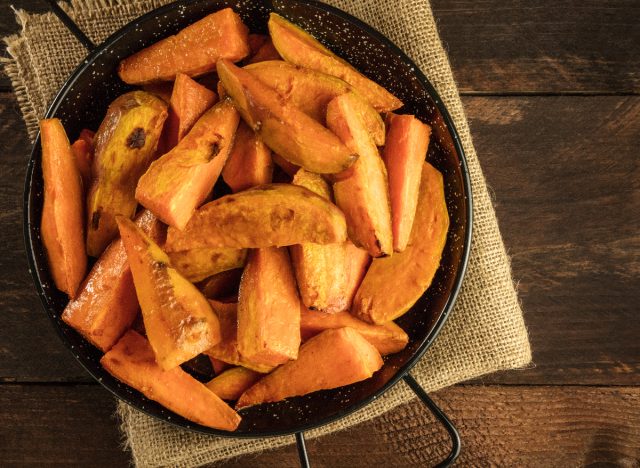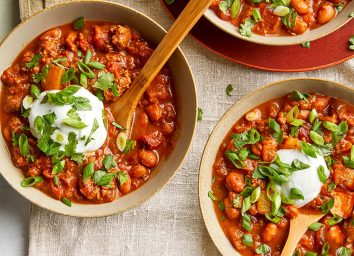
Energy levels can ebb and flow throughout our lives based on variables like sleeping habits, physical activity routines, short-term illness, or even stress. And energy can significantly drop for some people as they approach 50 years old and beyond, with the blame on menopause, decreased time in deep sleep stages, lower efficiency in metabolizing certain vitamins and minerals, the onset of chronic disease, or general reduced movement throughout the day.
If you suspect that energy levels are subtly waning and that fine-tuning your eating habits could be enough to correct the issue, turn to carbohydrates.
Carbohydrates are a primary source of fuel and are preferred by cells, muscles, and organs to do their jobs effectively. Foods with the appropriate quantity and quality of carbohydrates offer a steady supply of energy to fuel basic physiological processes and everyday activities, which is why carbs are best suited to improve energy levels.
Here we discuss five of the top foods to reach for in supporting better energy levels after 50 years old. Consider adding these to your diet for better energy, but it's also important to assess if you are experiencing chronic fatigue, which could be a symptom of other issues, and to alert your doctor if that may be the case.
Whole grain crackers

Grains are often falsely vilified in today's foodscape and for the wrong reasons. Grains like bread, rice, cereal, rolls, or buns are often consumed in their refined form (i.e., the three parts of the grain: bran, endosperm, and germ are not entirely intact). This processed grain version compromises the fiber, micronutrient, and macronutrient content, which may drop the energy-inducing power of these foods.
Up your grain game with an easy snack or meal addition via whole grain crackers. Whole grain crackers can be enjoyed alone, crumbled into a soup, dipped in hummus, or even spread with a soft cheese spread and topped with herbs.
Nuts

Peanuts or tree nuts like almonds, cashews, pistachios, and walnuts offer unique albeit similar health benefits. Nuts are considered a protein group choice as most quarter-cup servings of nuts have between five to six grams of protein; however, nuts also contain a decent amount of carbohydrate, especially compared to animal-based proteins. One of the highest carbohydrate nuts is cashews. Cashews contain nine grams of carbohydrates per quarter cup or one-ounce serving.
Nuts also contain a hefty amount of healthy fat which provides more calories per gram than any other macronutrient. Adequate calorie intake is helpful in granting us extra energy as we age, particularly if we are undershooting our calorie targets.
Berries

Wholesome energy from any of a wide array of flavorful berries (strawberries, raspberries, blueberries, cranberries, etc.) can pick you up from a mid-afternoon slump. Although the primary source of carbohydrate from berries is sugar, the sugar is inherent to fruit itself and provides a more sustained source of energy compared to sweets, desserts, or sugary sodas. Throw berries in a low-fat yogurt, whip them up in a simple smoothie with unsweetened soy milk, or add some to a slice of whole wheat bread smeared with peanut butter for a perfect snack.
Sweet potato

Vegetables are ultimately split into two categories: starchy and non-starchy. Starchy vegetables are generally considered to include potatoes, corn, and peas, while non-starchy vegetables are everything else such as leafy greens, peppers, onions, and tomatoes. Reach for starchy vegetables to gain an edge in combating fatigue associated with advanced age as these contain more substantial carbohydrates and calories. Sweet potatoes in particular offer twice as many carbohydrates as white potatoes and are a rich source of vitamin A.
Cannellini beans

Americans undoubtedly fall short on bean consumption. Thankfully incorporating white beans at snack time or mealtime offer a mild flavor more well-accepted and could be the first step in changing this statistic.
Great Northern beans, cannellini beans, and butter beans can be added atop a salad, thrown into tacos, smashed and spread on toast, or pureed into sauces to add some excitement at the kitchen table.
Cannellini beans contain 150 calories, 28 grams of carbohydrates, and nine grams of fiber per half cup canned. Meals should average 500-600 calories and 45-75 grams of carbohydrates for the best bet in raising energy levels in most older adults, which can be met with cannellini beans as the protein on the plate, followed by a serving each of fruit, vegetables, grains, and dairy.









